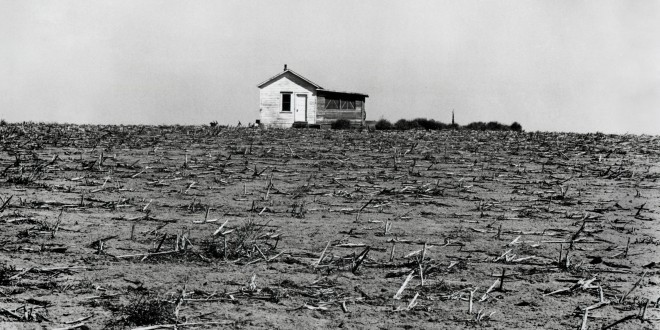
February is a critical month, a time when the spring market is opening in warmer states and is just weeks away in the upper Midwest and New England. In a typical year, it is a month when the best stagers are booked, painters are busy, landscapers are trimming hedges and sodding lawns of homes soon to be listed, and agents are educating new sellers about the realities of the marketplace.
This year may not be so typical.
Time is Running Out
An analysis of the leading national monthly market reports most real estate markets in America are in the throes of a three-year inventory drought that shows no signs of abating. In fact, in February it got even worse than ever. New listings, the vital lifeblood of local real estate economies that refreshes markets every spring like the sap rising in trees, are falling short of filling inventory deficits that have reached record depths. In fact, new listings are not even equaling last year’s inadequate levels.
With each passing day, inventory deficiencies grow and the odds that a flood of new listings will arrive just in time to meet the demand of spring buyers fades. Currently, the year-over-year shortfall ranges from 2.6 to 17.9 percent and deficits are growing. In the two reports that track new listings—national listings sites with current data from the vast majority of MLSs—new listings are trailing last year by 6.4 or 3.48 %.
All reports emphasize the extent of the drought. On Zillow, inventories have fallen 25 straight months, on NAR’s Existing Home Sales report it’s 21 months, RE/MAX reports 100 consecutive months of decline. On realtor.com, which makes its historical data available for free, inventories were 23.66% greater on February 1, 2014, than on February 1, 2017—a loss of more than 424,000 listings.
February Inventories at a Glance
|
Source |
Total |
New Listings |
Days on Market Annual Trend |
Comments |
||
|
Month over Month |
Year over Year |
Month over Month |
Year over Year |
|||
| NAR |
4.2% |
-6.4% |
N/A |
N/A |
-15% |
Low supply pushing up price growth. |
| realtor.com |
1.89% |
-11.45% |
17.21% |
-3.48% |
-6% |
New low in available homes for sale. |
| Redfin |
N/A |
-12.9% |
10% |
-6.4% |
-11.7% |
Third year in a row overall supply fell. |
| RE/MAX |
-2.2% |
-17.9% |
N/A |
N/A |
-9.3% |
Inventory is principal constraint on sales. |
| Zillow |
N/A |
-2.6% |
N/A |
N/A |
N/A |
Low supply of homes available. |
The Consequences of Inventory Drought
This month’s market reports read like a textbook example of what happens when supplies decline in a supply-and-demand economy. Homes are selling faster; days on market are down from 6 % to 15 % from last year. Prices are rising at rates from 4 % to 8 % faster than a year ago. “You don’t have to be an economist to know that when demand is high, and supply is low, prices go up,” commented Zillow’s Svenja Gudell.
Sales fell in February after rising in January, an up-and-down pattern that probably reflects the low level of sales this time of year rather than the inventory situation. Both Gudell and RE/MAX’s CEO Dave Liniger both said sales are already feeling the impact of short supplies. Trulia’s Ralph McLaughlin suggested rising prices in hotter markets may already be putting down payments out of reach for first-time buyers.
NAR’s Lawrence Yun pointed out that new listings are not helping to alleviate the shortage of affordable homes because newly listed properties are being snatched up quickly so far this year, leaving behind minimal choices for buyers trying to reach the market.
What’s Causing the Drought?
Zillow’s Chief Economist Svenja Gudell lists four factors responsible for the drought. The first is high demand fueled by improving wages and undeterred by slowly rising rates, at least so far. She also blamed inadequate new home construction and negative equity—which still freezes in place many owners who bought their homes at the peak of the boom. Gudell, McLaughlin and Redfin’s Nela Richardson suggested shortages have been causing gridlock for move-up buyers who are unwilling to list their homes for fear they won’t find a new one.
McLaughlin segmented supplies and prices by three price tiers, starter homes, trade-ups and premium to show how pressure on prices is at least twice as strong on starter homes as premium-priced ones.
Regional Impacts
Redfin reported Rochester NY led the nation in overall inventory decrease, down 42.4 % since last February, followed by Buffalo NY (-37.8%), Seattle WA (-35.3%) and Omaha NE (-34.7%). Trulia said inventories in Salt Lake City UT (-69.5%), Seattle WA (66.6%), San Diego CA (-66.5%) and Nashville, TN (-66%) have declined most since the first quarter of 2012.
February Market Reports at a Glance
|
Source |
Monthly Sales Trend |
Annual Sales Trend |
Monthly Price Trend |
Annual Price Trend |
Median Sale Price |
Days on Market or Months Supply |
Comments |
| NAR |
-3.7% |
5.4% |
-2.18% |
7.7% |
$228,400 |
45 |
Inventory conditions weakened sales. |
| Realtor.com |
NA |
NA |
0 |
9% |
$250,000 |
90 |
Markets hit a brand new low level of supply. |
| Redfin |
-2.0% |
1.8% |
0 |
72% |
$260,900 |
60 |
Total equity hit a new peak. |
| RE/MAX |
NA |
-02% |
1.4% |
6% |
$211,000 |
68 |
Prices hit a new high due steady demand and record low inventory. |
| Trulia |
N/A |
N/A |
NM/A | Starter 8.3%Trade-up 6.8%Premium7.2% | Starter$165,015Trade-up$289,455
Premium $614,143 |
N/A |
Homebuyers have now been stifled by low inventory for the last two years despite prices rising to pre-recession highs in many markets. |
| Zillow |
N/A |
N/A |
0.4%* |
6.9%* |
$196,600* |
N/A |
Inventory shortages will be a big concern for buyers as home shopping season begins. |
*These data are not sales but valuations for all homes based on Zillow’s AVM.
Best Sellers’ Market in a Generation?
Homes are selling 6 % to 9 % higher than they were a year ago and median prices are 26 % higher than they were three years ago, according to realtor.com’s records. Days on market are 6 % to 15 % less than a year ago, and 17.4 % less than three years ago.
Is this the best seller’s market in a generation, or at least since the peak of the boom in 2005-2006? Or will too many owners hold their cards for another year to see if things get even better for them? March market reports may answer those questions.





